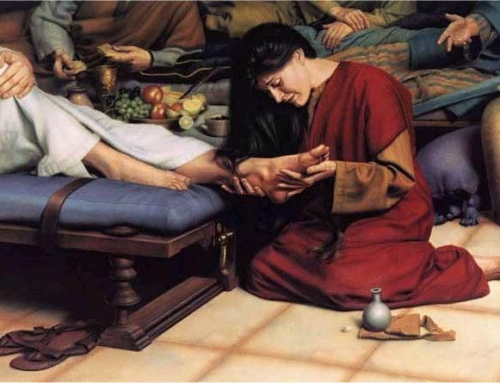What is the difference between the Church of God (seventh day) and the Seventh-day Adventist Church?
History
October 22, 1844, is an important date for both the Church of God (seventh day) and the Seventh-day Adventists. William Miller and others had predicted Christ would return to earth on that date. As many as 50,000 “Adventists,” nearly all of whom resided in the Northeastern United States and Southeastern Canada, looked forward expectantly to the return of Jesus. When Jesus did not return as expected, there was a terrible disappointment. Afterwards, many of the Adventists returned to their former churches. Some gave up the faith altogether. But a few sought to find meaning in the mistake. They began diligently studying their Bibles to understand what happened. Laying all previous doctrines aside, they determined to know nothing but the Bible and the Bible alone. They determined to abandon every “tradition of man” that was not based upon a “thus saith the Lord.”
As a result of this study, the Adventists discovered such truths as:
- The seventh day Sabbath was still in effect (Matthew 5:17-19)
- The souls of the dead are asleep in the grave (John 5:28-29)
- Hell is not an eternal torture chamber and the wicked only suffer until they are annihilated (“perish,” John 3:16)
- The Biblical name of God’s New Covenant people is the Church of God (Acts 20:28; 1 Cor. 1:2, 10:32, 11:22, 15:9; 2 Cor. 1:1; Gal. 1:13; 1 Tim. 3:5)
- The Lord’s Supper was celebrated annually on Passover Eve (Luke 22:15)
- Pagan holidays, such as Christmas and Easter, should not be honored by Christians (2 Cor. 6:14)
In the late 1840s, a remnant of several hundred Adventists began to adopt and practice these Biblical doctrines. This group was led by former sea captain Joseph Bates. James and Ellen White joined up with Bates in 1846 and became influential among this group. At this time Ellen White was having what some regarded as “visions.” In 1852, Bates taught the Sabbath to a Sunday-keeping minister named Gilbert Cranmer. Cranmer began preaching the Sabbath and raising up churches.
Beginning around 1855, some Adventists started pushing for adopting the “visions” of Ellen White as inspired truth from God that should be followed. Other Adventists strongly opposed this. They denied her “visions” were inspired because her early “visions” contradicted themselves, the Bible, and known facts. Besides, there was a strong belief by many that they went through the 1844 disappointment for a reason: to teach them the absolute importance of following the Bible and the Bible alone. Therefore, they rejected having another source of truth other than the Bible.
In 1858, Gilbert Cranmer was deeply troubled as he watched James and Ellen White advocate the “visions” of Ellen. Some Adventist churches began making belief in her “visions” a test of fellowship. Distraught over this turn of events, he decided to part ways with Bates and the Whites. In 1860, he joined forces with churches in Iowa that chose to stand on the Bible alone, and in 1863, the Church of God (seventh day) (COG7) was officially formed.
Doctrinal Differences
The Seventh-day Adventists dropped several doctrines that were popular among Sabbath-keeping Adventists during the late 1840s and 1850s, and added a large number of new doctrines.
Here are the doctrines that were dropped:
- In 1863, they officially decided against the name “Church of God,” and instead adopted the name Seventh-day Adventists (SDAs)
- They abandoned celebrating the Lord’s Supper annually, and adopted the tradition of some Protestant denominations in celebrating it quarterly
- They gradually returned to celebrating pagan holidays such as Christmas and Easter
Here are the doctrines that were added:
- SDAs taught that a door of salvation was shut in 1844, and Jesus began the “Day of Atonement” and the Investigative Judgment of the righteous. COG7 rejected these teachings, as do many modern SDA scholars, because the Bible teaches the Atonement was completed at the cross, not in 1844. The Bible also teaches that God already knows who His children are and needs no Investigative Judgment to figure that out. The COG7 teaches 1844 was nothing more than a tragic mistake, but some good came out of it because people began studying their Bibles, thus discovering the truth about Sabbath and the annihilation of the wicked in hell.
- SDAs labeled Ellen White as the Spirit of Prophecy and adopted her writings as an authoritative source of truth. COG7 teaches the Spirit of Prophecy is the Holy Spirit, who inspired the writers of the Bible. COG7 teaches the Bible is the only authoritative source of truth for the Church of God.
- SDAs adopted the teachings of Joseph Bates regarding Sabbath-keeping being the “Seal of God” and Sunday-keeping being the “Mark of the Beast.” COG7 does not advocate these teachings because of the lack of Biblical evidence to support this doctrine.
- SDAs regard themselves as the true remnant people of God. According to their printed materials, they regard Catholicism as “fallen” and all other Protestant churches as “apostate.” The COG7 regards all believers, regardless of denomination, who keep the commandments of God and the faith of Jesus to be the “remnant” people of God.
- SDA leaders have adopted a pro-choice attitude towards abortion. Abortions are performed in SDA hospitals. COG7 is staunchly pro-life.
- SDAs teach the saints will be in heaven during the Millennium. The COG7 believes the preponderance of Biblical evidence shows the saints will inhabit earth during the Millennium.
- SDAs teach that vegetarianism and abstinence from alcohol and coffee are an important part of sanctification. The COG7 teaches against intoxication, whether it is through drug abuse or drunkenness. However, decisions about what foods to eat and what beverages to drink are left to the individual as guided by the Holy Spirit residing in the individual’s soul temple. The COG7 teaches that the Kingdom of God is not about meat or drink (Romans 14:17).
- Structurally, the SDA Church has a strong, multi-level hierarchy similar to the Catholic Church. The COG7 has a less-centralized organization, with local churches retaining greater autonomy.





